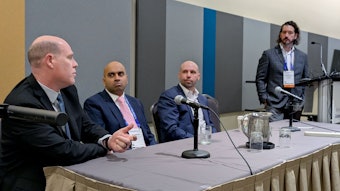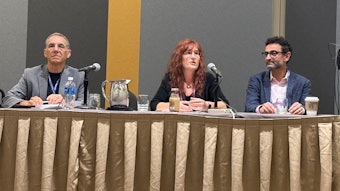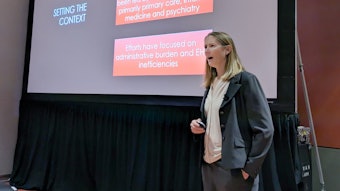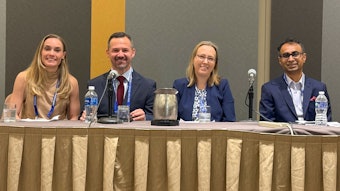Searching for the sweet spot in managing diabetics during surgery
Four authors of the revised SAMBA statement review updated recommendations and ongoing research.
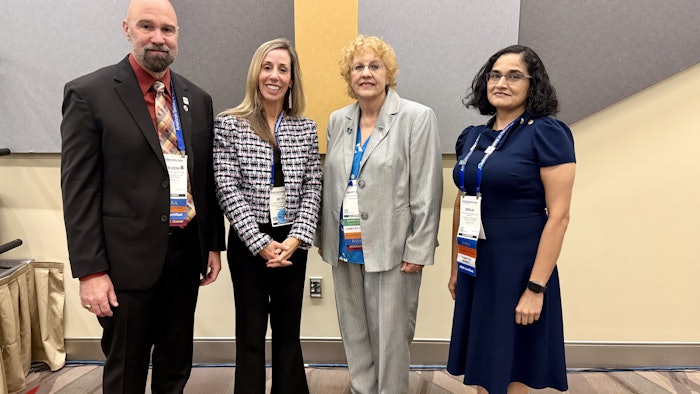
In 2024, the Society for Ambulatory Anesthesia (SAMBA) published the “Updated Consensus Statement on Perioperative Blood Glucose Management in Adult Patients With Diabetes Mellitus Undergoing Ambulatory Surgery.” Yesterday, several of its authors discussed some of the changes and surrounding controversies in “Let’s Chat About Patients With Diabetes in the ASC.”
Mary Ann Vann, MD, FASA, an Anesthesiologist at Beth Israel Deaconess Medical Center in Boston, who also coauthored the 2010 SAMBA consensus statement, drove the discussion with intermittent inquiries and prompts to the three panelists: Steven Butz, MD, FASA, Elizabeth Duggan, MD, MA, and Niraja Rajan, MBBS, FASA.
Patient prep
Getting ready for an ambulatory surgery on a diabetic patient should ideally start one week prior to the procedure, said Dr. Rajan, who is Medical Director of the Hershey Outpatient Surgical Center in Pennsylvania. Many ambulatory surgery centers (ASCs) employ health history nurses to contact patients for intake information.
“It shouldn’t be a surprise that a patient has diabetes; I hope it’s not a surprise,” she said. “If we identify them in advance, we like to schedule them earlier in the day simply because there’s less disruption to their NPO schedule and medication schedule.”
Dr. Rajan said she instructs her diabetic patients to eat and take medicine as they would the day prior to surgery and to make minor adjustments the day of surgery. This typically means staying hydrated with clear liquids up to two hours before their procedure time and holding all medications — including insulin — that morning.
Diabetic patients should also be made aware of what their options are if they experience hyperglycemia. In this case, Dr. Rajan said they can consume an appropriate carbohydrate that doesn’t interfere with their NPO status.
Dr. Butz, who is a Professor of Anesthesiology at the Medical College of Wisconsin and sees mainly pediatric patients, said it’s important for children’s caregivers to bring extra pump supplies, extra insulin, a clear carb liquid, and enough medicine in their meter to last from leaving the house until they return home. ASCs don’t carry these items, so patients must be responsible.
For diabetic adults who are older or obese, Dr. Duggan said carbohydrates may technically be OK to consume leading up to surgery if their condition is well-controlled, but water is recommended because it’s always a safe bet. SAMBA does not recommend carbs for type 1 diabetics because they are more sensitive and can have a more difficult time controlling levels.
GLP-1s and other meds
And then there are GLP-1 medications.
“Let’s be honest, the data on this is still very mixed. Every day, I see two or three new studies — some good, some not so good,” said Dr. Duggan, who is an Associate Professor in the Department of Anesthesiology and Perioperative Medicine at the University of Alabama-Birmingham. “Where we are today, the best data out there supports 24 hours of clear liquids for patients taking a GLP-1 and their risk of retaining gastric contents goes down pretty notably.”
Dr. Duggan added that there is not sufficient or consistent data that shows withholding GLP-1, or similar medications, can prevent aspiration. In fact, she referenced a recent retrospective study published in JAMA that assessed patients who took the drug 30 days before surgery (necessary or elective), and the researchers could not predict who would or wouldn’t aspirate.
Diabetic patients who have taken GLP-1s for more than four months tend to be safer, she said, while people who take the longer-acting variety (weekly versus daily) are more likely to get tachyphylaxis, which can diminish the delay of gastric emptying.
Dr. Rajan reminded attendees that while aspiration in this scenario is a concern, it is also rare. Patients who present for elective surgery with gastrointestinal symptoms, such as pain, nausea, or vomiting, should be rescheduled.
“Trying to identify someone who has gastroparesis well enough ahead of time for us to give them modified NPO instructions is a challenge,” she said. “[It’s a] great question and a prevailing problem.”
It is a problem that won’t be going away, added Dr. Duggan, who referenced the 2025 Standards of Care in Diabetes from the American Diabetes Association (ADA), which recommends GLP-1s as a first-line drug for patients with type 2 diabetes, even before starting insulin. GLP-1s also have proven beneficial for patients with heart disease, heart failure, renal disease, and even substance abuse, in which it can help curb cravings.
Often, the best thing an anesthesiologist can do is ask the patient about their normal symptoms, such as how often they have reflux or if they wake up with food in their mouth, said session moderator Dr. Vann.
SGLT2 inhibitors are another medication class to consider when it comes to caring for diabetic patients undergoing ambulatory anesthesia. According to the U.S. Food and Drug Administration (FDA), SGLT2s have a warning that requires patients to withhold the drug for at least 72 hours before surgery (96 hours for ertugliflozin) to prevent euglycemic diabetic ketoacidosis (eDKA). But Dr. Duggan said that could change in the future.
“I’m going to be cautious saying people should get SGLT2s the day before surgery, but I think the data is driving us toward this as we move forward,” she said.
The topic of dexamethasone also got the attention of many attendees. The SAMBA statement recommends the use of low-dose (4 mg) dexamethasone in patients with diabetes. However, the panelists cautioned that it could interfere with pumps and cause hyperglycemic effects, particularly in type 1 diabetes. Dr. Butz said he typically omits it and opts for a different medication to treat post-operative nausea and vomiting unless the rationale is specific, such as a tonsil surgery where airway swelling must be kept to a minimum.
Pumps and more
There are also various types of pumps to consider, the panel said. The general rule of thumb is to have the patient (or their caregiver, if a young child) treat themselves using whichever instrument is part of their daily management. However, continuous glucose monitors (CGMs) are not FDA-approved in hospitals.
Dr. Butz said his facility established a policy that allows patients with CGMs to use them, but health care professionals cannot treat a patient based on CGM data.
“You can use [CGMs] as an indicator but must always verify with point-of-care testing,” he said. “Patients are OK to wear it, but it should be kept away from the surgery site.”
“I am not going to base any therapeutic decisions on a CGM alone; I always verify before treating,” Dr. Rajan added.
The ADA also supports diabetes device use in the hospital, and SAMBA supports device use for shorter surgeries, Dr. Duggan stated. She recommends trying to let patients know at least 24 hours ahead of time if they need to relocate their sensor to keep it out of the surgical area. The reason for this is that a sensor is less reliable within 24 hours of placing it.
Dr. Rajan also cautions her patients to make sure their CGM is not delivering therapeutic insulin intraoperatively because it can react with electrocautery, causing alarming, inaccurate readings.
Over the last decade, the use of automated insulin delivery (AID) devices has tripled in type 1 diabetes patients, said Dr. Duggan. Rather than reading only current blood sugar, the AID has a complex algorithm that automates and predicts targets based on historical measurements at certain times of day (e.g., exercise, sleep).
“It’s well-proven that [AIDs] require less anesthesiologist intervention, and they have increased time and range in operating rooms. In studies in ambulatory surgery centers, they’re as accurate as point-of-care blood glucose testing, and the patients are so much more satisfied; they really do want to partner with us on their device.”
Anesthesiologists should do everything they can to not remove a patient’s pump during surgery. They’re expensive, and patients typically don’t have replacements at the ready, Dr. Rajan said. However, if a pump falls out or gets damaged intraoperatively, said Dr. Butz, the patient can usually get a new one quickly.
What else is new?
The panelists touched on several of the other new recommendations in the 2024 consensus statement, including:
- Do not postpone an ambulatory surgery based on a patient’s A1C levels
- The targeted blood glucose concentration can be between 180 and 250 mg/dL
- Insulin naïve patients who have perioperative hyperglycemia (≥250 mg/dL) should be treated with insulin based on their characteristics and procedure type
- Anesthesiologists should use continuous subcutaneous insulin infusion for procedures less than two hours long, if the device can be placed away from the surgical site and easily visualized and accessed.
Additionally, SAMBA recommends that ambulatory facilities should develop and implement a blood glucose management protocol.
The panel’s final reminders for anesthesiology professionals included checking blood sugar postoperatively within the time period of peak effect and ensuring patients get enough water, or fluids, before going home.






